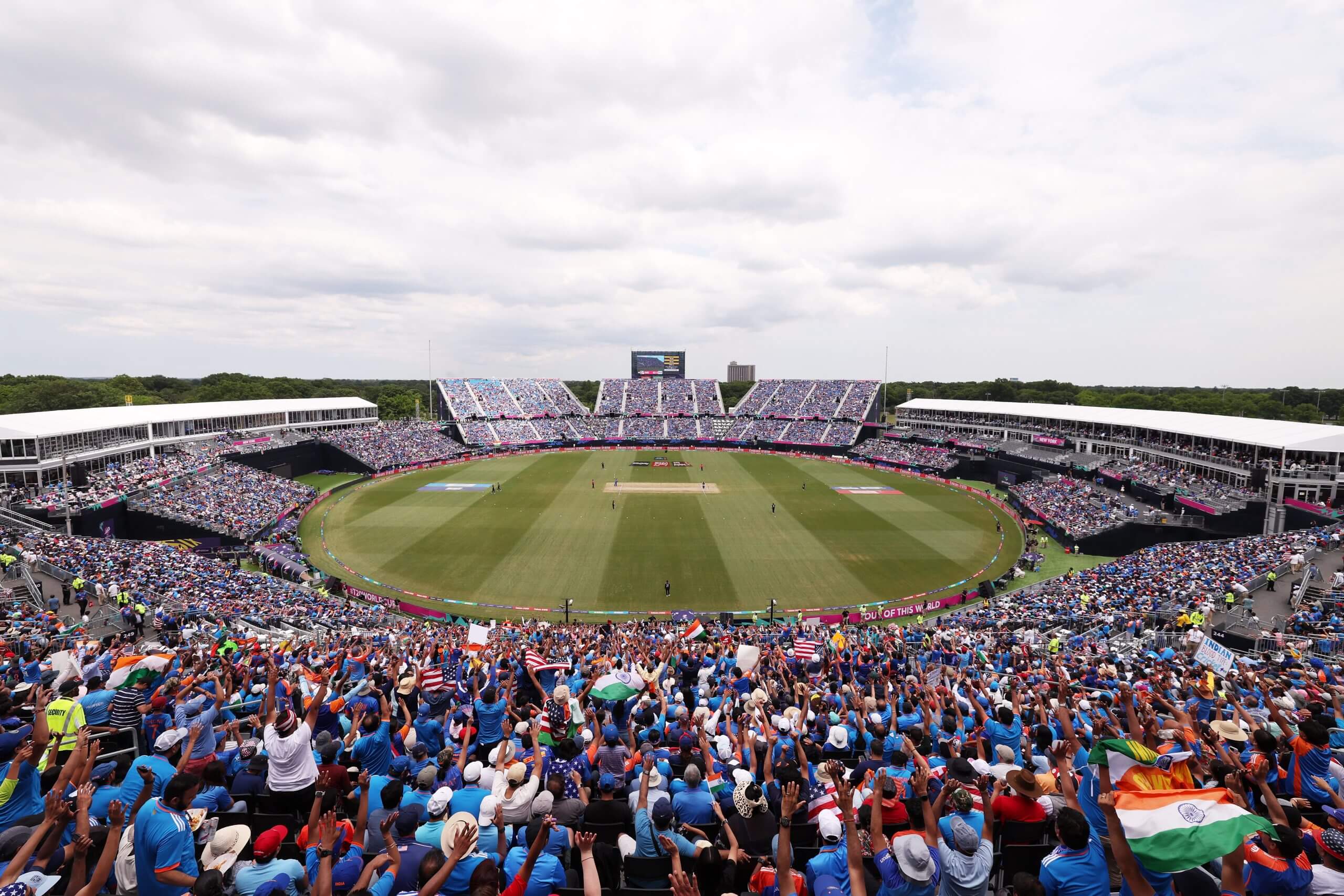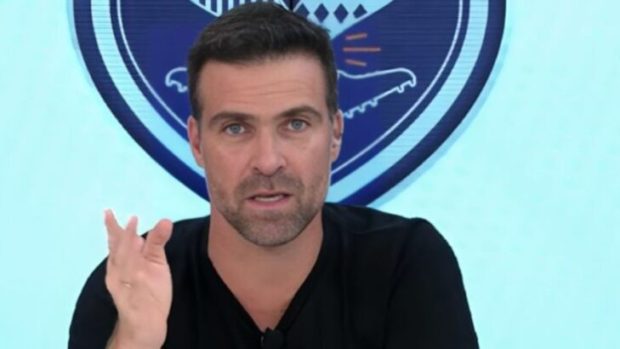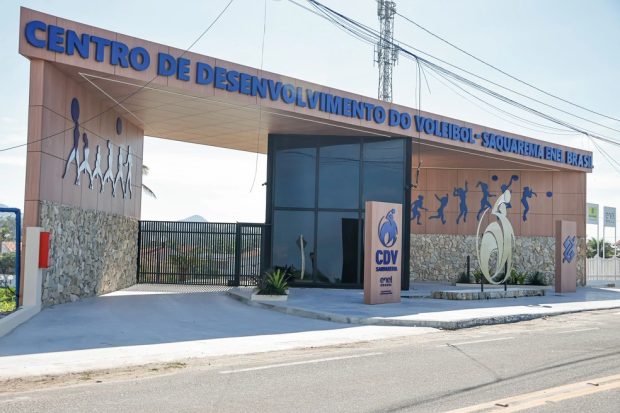
At first glance, the venue map for the 2028 Los Angeles Olympics looks like a microcosm of Southern California development, sprawling in nearly every direction.
In an interview Tuesday after the LA28 organizing committee unveiled its revised map, Reynold Hoover, the retired U.S. Army lieutenant general who is the group’s chief executive, insisted there was a method to what might look like mad sprawl.
Advertisement
“We’ve clustered venues together,” Hoover said from Los Angeles. “We’ve got seven sport parks that are going to allow us to cluster the Games experience around the city.”
That’s the theory. Still, on an average day, it might take two or three hours to drive from the San Fernando Valley, which will host 3×3 basketball, modern pentathlon and squash, to San Clemente, where surfers will compete in one of the sport’s spiritual homes.
Same goes for the journey from the beaches of Venice, where several endurance competitions will begin, out to Pomona, where cricket will return to the Olympics for the first time since 1900. Long Beach, Carson, Anaheim, Inglewood, Pasadena, and downtown Los Angeles will also host competitions.
The sprawl will have some downstream effects. The main Olympic Village will be at UCLA. But Hoover said some athletes will likely stay in “satellite villages” closer to their competition sites.
Nearly all the locations will host more than one competition, or at least be not so far from another competition. But the days of concentrating the Games in an Olympic park, something that occurred at full tilt a decade ago and to a lesser extent as recently as 2021 in Tokyo, feels like an overpriced venture of yesteryear.
“Some of the zones are small and some are big,” Hoover said. “What we tried to avoid is one-off venues.”
Hoover, whose previous jobs have included serving as the deputy commander of the U.S. Army’s Northern Command and as Special Assistant to the President of the United States for Homeland Security, spent a sizable chunk of last summer at the Paris Olympics. Those Games showcased the City of Light with temporary venues everywhere from the Eiffel Tower to the Pont Alexandre III over the Seine.
The aesthetics dazzled Hoover, as they did just about everyone else. But as the organizer of the next Games and with a privately financed budget to adhere to, Hoover had to pay attention to more mundane concerns. Many of those picturesque venues in Paris required a lot more than sets of bleachers. Many needed their own support facilities, everything from kitchens to media and broadcast complexes, warm-up areas and security perimeters.
Advertisement
Also, the International Olympic Committee has increasingly encouraged organizers to use existing venues to reduce costs where they can. The Los Angeles region has plenty of venues to choose from. The challenge had been choosing the right ones and reaching deals with the people who control the locations.
In certain instances, that has proven difficult. Organizers in Los Angeles wanted to stage beach volleyball in Santa Monica, on the same sand where many say the sport was born. Santa Monica, however, which functions as something of an autonomous city-state within the confines of Los Angeles County, has become rather inhospitable in recent years to big events. It recently forced the Los Angeles Marathon to change its famous “stadium to the sea” course elsewhere, no longer wanting to shoulder the costs of being the race’s finish line.
“We tried, but in the end we just couldn’t come to terms,” Hoover said.
He and the rest of the team tried to make some lemonade out of the lemon. They pivoted and moved beach volleyball to Alamitos Beach in Long Beach, the site of beach rowing races and not far from the Long Beach Convention Center, which will host sport climbing and target shooting.
That shift, Hoover said, created another opportunity just south of Santa Monica in Venice. With Santa Monica no longer a host site, organizers reached a deal to locate the start lines for the triathlon, road cycling and the marathon near the beach in Venice, where Arnold Schwarzenegger used to pump iron.
Some competitions inevitably may feel like they are taking place on islands, and we’re not even talking about using the whitewater course and softball venues in Oklahoma City as a cost-saving measure. Indoor volleyball in Anaheim won’t be near much else, and players will probably have to stay close, rather than at UCLA.
Advertisement
Hoover and his team looked far and wide for the right location to build a proper cricket ground, scouting locations in Northern California and on the East Coast before settling on Pomona’s fairgrounds. The plan is to build a temporary stadium similar to the 34,000-seat facility that popped up in Long Island’s Eisenhower Park last year for the T20 Cricket World Cup.
“The athletes want to be part of the Olympic experience,” Hoover said.

The Olympic cricket setup in Pomona, Calif., will resemble the temporary 34,000-seat stadium built on Long Island last year for the T20 World Cup. (Robert Cianflone / Getty Images)
Slightly more surprising might be the decision to place squash at the Universal Studios lot in the San Fernando Valley. Hoover said the Universal lot was “always in play,” in part because Universal and NBC, the host broadcaster and leading patron of the Olympics, are sister companies.
The lot isn’t very close to anything else, but Hoover said it was hard to resist the iconic Los Angeles location. The clocktower on the main square of the town in the 1985 film “Back to the Future” will serve as a backdrop.
“Us old guys will remember it,” Hoover said.
Now the trick is figuring out how to weave all this together with a transportation network. It’s been a while since the Summer Games took place in a location where fans could drive their cars and park near some competitions. Some of that will happen this time around, though many are expected to use the region’s vastly improved train and bus lines to move around.
“We’ve got more capabilities than we had in 1984,” Hoover said, referring to the last time the region hosted the Summer Olympics. “People will get to the Games. I promise.”
(Top photo of a surfer walking at Lower Trestles in San Clemente, Calif., the site of the 2028 Olympic surfing competition: Paul Bersebach / MediaNews Group / Orange County Register via Getty Images)
This news was originally published on this post .










Be the first to leave a comment